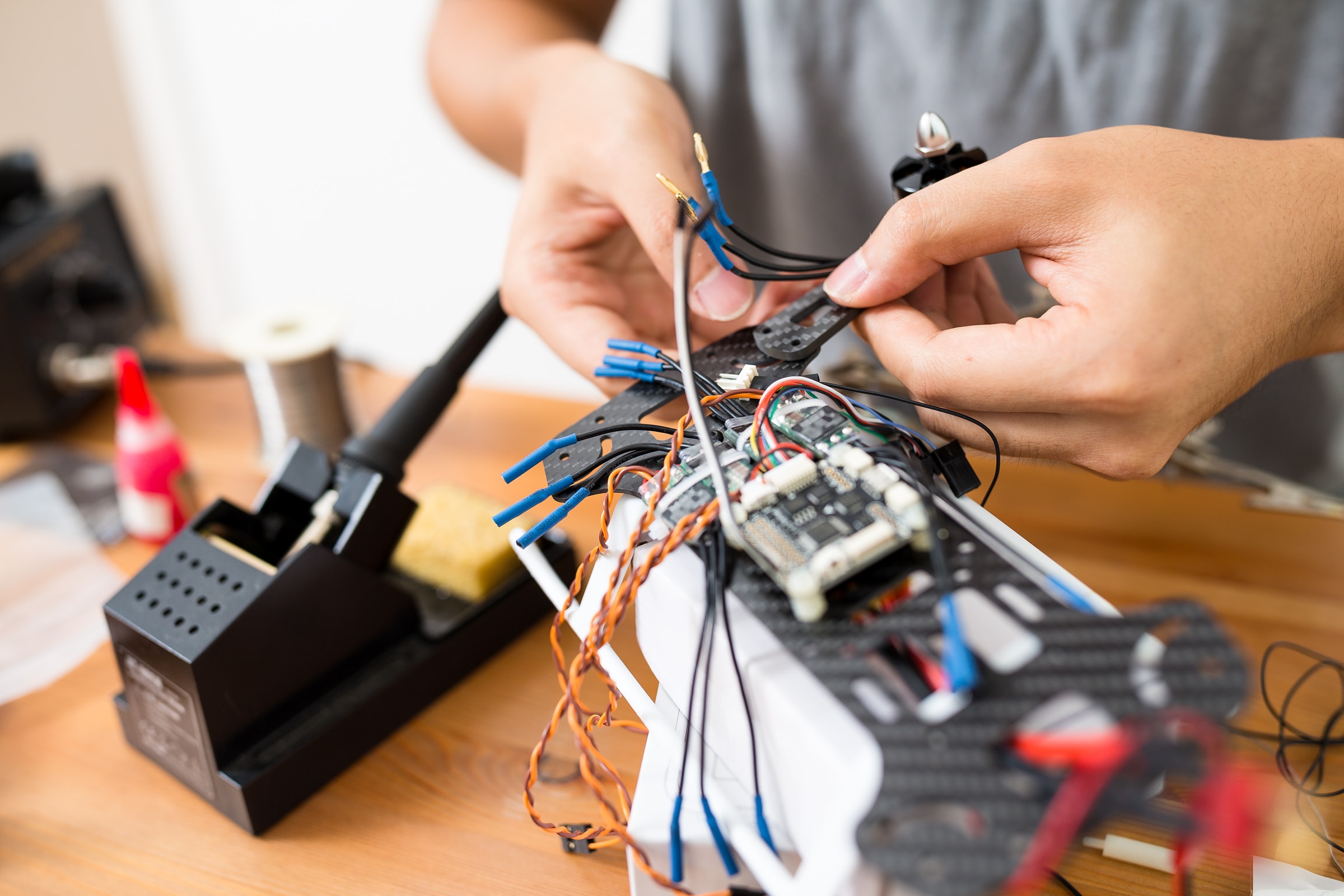What’s the Latest in Drone Technology for Rapid Package Delivery?

In the realm of fast-paced, high-tech logistics, the world has been all agog about drones. Not just any drone, but delivery drones. Amazon, for instance, has been at the forefront, experimenting with drones as a way to expedite package delivery. The vibrant tapestry of modern technology is being woven with threads of drones and drone operations that could very well redefine the way we perceive package deliveries. In this article, we shall delve deep into the latest advancements, the scope, and the evolution of the drone technology in the delivery market.
The Advent of Drone Delivery Services
The delivery market has seen a meteoric rise in tech integration, with drones becoming a quintessential part of the picture. This section outlines the advent of drone delivery services, the origins, and the trajectory it took to get where we are now.
A découvrir également : Can AI-Powered Anomaly Detection Systems Prevent Cybersecurity Breaches?
It all began with an ambitious announcement by Amazon in 2013. Amazon’s CEO, Jeff Bezos, introduced the world to the concept of delivery drones during an interview on 60 Minutes. He unveiled Amazon Prime Air, a futuristic delivery system that aimed to get packages to customers within 30 minutes using unmanned aerial vehicles. While many were skeptical, the company pursued the idea, investing heavily in research, development, and testing.
The concept of drone delivery was quickly picked up by other companies, each investing in this new technology to stay competitive in the e-commerce industry. Early adopters like Google’s Project Wing and UPS’s Flight Forward followed suit, setting the stage for a drone revolution in the delivery sector. Today, it is not uncommon to see companies trying to integrate drone operations into their logistics and delivery services.
Dans le meme genre : What Is the Role of AI in Streamlining Clinical Trial Patient Selection?
Technological Advancements in Drone Delivery
The technology that powers delivery drones has come a long way since its inception. In this section, we will explore the advancements that have made drone deliveries more feasible, efficient, and safe.
To begin with, flight operation systems of delivery drones have greatly improved. Modern drones employ advanced GPS and vision systems to navigate. They are equipped with obstacle detection and avoidance systems that prevent collisions, enhancing safety during operations.
The delivery drones of today are no longer just remotely controlled devices. They have turned into autonomous vehicles, equipped with AI and machine learning capabilities. These technologies allow drones to learn from their environment, adapt, and make decisions, reducing the need for human intervention.
Moreover, the physical design of delivery drones has evolved. The early prototypes were quadcopters, but the latest designs incorporate fixed-wing technology for longer flights, greater speeds, and better energy efficiency.
In terms of payload capacity, the development of lightweight but strong materials has allowed drones to carry heavier packages over longer distances. Amazon’s delivery drone, for instance, can carry a package weighing up to 5 pounds for a 15-mile round trip.
The Future of Drone Deliveries
The delivery services market is buzzing with possibilities. Unmanned aerial vehicles have seeped into the logistics of companies trying to save time, cut costs, and operate with unprecedented efficiency. Let’s delve into what the future holds for this technology.
Despite the advancements, it’s still early days for commercial drone deliveries. Regulatory hurdles and public acceptance remain key challenges. However, the industry is hopeful. With further advancements in technology and more comprehensive regulations, widespread adoption of drone deliveries is not far off.
Companies like Amazon, UPS, and Google are already testing drone deliveries in selected areas. In June 2019, Amazon announced that it would start drone deliveries "within months." Similarly, UPS received the Federal Aviation Administration’s (FAA) Part 135 Standard certification in September 2019, allowing them to operate a “drone airline.”
Drones in Delivery Operations: A Game Changer?
Integrating drones into delivery operations could significantly reshape the logistics industry. In this section, we will discuss the potential impact of drone technology on delivery services and how it could transform this sector.
One of the key benefits of drone deliveries is speed. Given the absence of traffic and road-related restrictions, drones can deliver packages much faster than traditional ground transportation. In fact, Amazon’s Prime Air service aims to deliver packages in 30 minutes or less.
Another advantage is the reduction of carbon footprint. As drones are electrically powered, they produce zero emissions during operation, contributing to a greener environment.
Cost-saving is another attractive feature. While the upfront investment in drone technology is significant, operating costs are relatively low. Drones can potentially reduce delivery costs, especially for last-mile deliveries, which account for a significant portion of total delivery costs.
In summary, drone technology has the potential to revolutionize the delivery market. As technology advances and regulations evolve, we can expect to see more drones in the air, delivering packages right at our doorsteps. Who knows, the next package you order online might just be delivered by a drone!
The Impact of Drone Delivery on the Economy
The propensity for drone deliveries to revolutionize the delivery market goes beyond just speed and efficiency. The economic implications of this cutting-edge technology are far-reaching and could see the birth of new industries and the creation of jobs.
Currently, the drone industry is estimated to be worth several billions of US dollars. As drone technology continues to mature, it is expected to generate a significant amount of revenue, with forecasts projecting a market size of over a hundred billion dollars by the end of the decade.
The impact on job creation cannot be overstated. Companies are already hiring drone pilots, engineers, and technicians to operate and maintain drone fleets. Moreover, regulatory bodies like the Federal Aviation Administration (FAA) are also recruiting to meet the growing demands of monitoring and regulating drone operations.
The integration of drones into delivery services could also lead to a significant reduction in delivery costs. Traditional delivery methods are labor-intensive and expensive, especially for last-mile deliveries. Drones, however, can cut these costs by up to 50%, translating to substantial savings for businesses and consumers.
Medical supplies delivery can also be revolutionized with drones. In remote and hard-to-reach areas, drones provide a faster and more efficient way of delivering essential medical supplies, potentially saving lives.
Conclusion: The Sky’s the Limit for Drone Deliveries
Just over a decade ago, the idea of having a package delivered by a drone seemed like a concept straight out of a science fiction novel. Today, it is a reality that’s fast gaining traction across the globe. From Amazon’s Prime Air to UPS’s Flight Forward and Google’s Project Wing, numerous companies are pioneering the drone delivery market and redefining what’s possible in logistics and delivery operations.
The integration of drone technology into the delivery market is not without challenges. Regulatory hurdles, public acceptance, and technical issues need to be addressed. But the potential benefits – speed, cost-effectiveness, reduction in carbon footprint, and the creation of new jobs – make drone deliveries an exciting prospect for the future.
As we look forward to the dawn of a new era in package delivery, one thing is certain: the sky’s the limit for what drone deliveries can achieve. Who knows, the next package you order might just be dropped off at your doorstep by a drone. The future, it seems, is not as far off as we once believed. Today, the 16th of April, 2024, we stand on the brink of a drone revolution. The future of drone deliveries is not just about packages – it’s about potential, possibilities, and progress.
